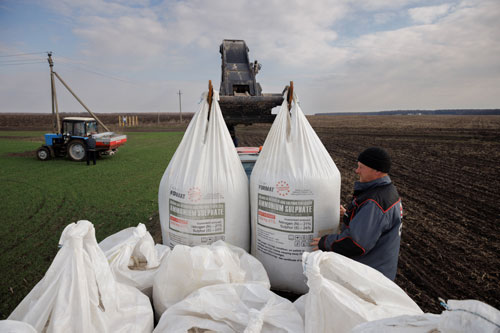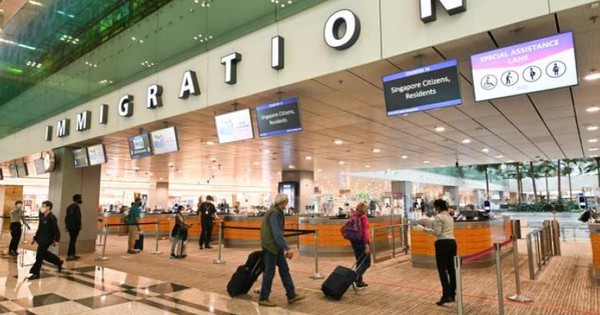Bad news for the global economy
Chinese stocks led the decline in Asia-Pacific markets on April 11. Part of the reason was that China’s inflation data in March were higher than expected, in which the producer price index (PPI) and the consumer price index (CPI) increased by 8.3% and 8.3% respectively. 1.5% over the same period last year.
This official data released on April 11 made the closing prices of all three main China indexes simultaneously fell, including CSI 300 (down 3.09%), Shanghai composite (down 2.61%) ) and Shenzhen component (down 3,671%).
In common condition are Hong Kong’s Hang Seng indexes (down 3.03%), Japan’s Nikkei 225 (0.61%), South Korea’s Kospi (down 0.27%), MSCI (Asia’s – Pacific excluding Japan, down 1.55%)…
“I think the more noticeable problem lies in the large gap between CPI and PPI, which shows that most Chinese companies are losing their price advantage,” said Ramiz Chelat, director at Management Company. Vontobel property, exchange with radio CNBC.

Farmers in the village of Yakovlivka, on the outskirts of Kharkiv city, unload fertilizer on April 5. They are holding on to wait for the wheat harvest Photo: REUTERS
China still adheres to the “No Covid-19” strategy to deal with the worst wave of infections since the beginning of the pandemic (in 2020). Shanghai began to relax the blockade of some areas, although the number of new Covid-19 cases on April 10 set a record of 26,087 cases, with 914 symptomatic cases.
Although the blockade has not been completely closed, but Guangzhou, a manufacturing center and megacity of 18 million people in southern China, has almost banned people from going in and out. According to AP, the whole of Guangzhou had only 27 new cases on 11-4.
The blockade situation in China combined with the fact that member countries of the International Energy Organization (IEA), including the United States, released oil from their reserves, caused oil prices to continue to fall. On April 11, the price of Brent oil futures dropped to 100.95 USD/barrel and WTI oil futures price dropped to 96.37 USD/barrel, according to Reuters.
The global market will be more volatile this week, when the US Federal Reserve (FED) continues to discuss raising interest rates and this country announces the CPI and PPI of March on April 12 and 13.
This week also kicks off earnings season, which includes US banking giants JPMorgan, Goldman Sachs, Wells Fargo, Citi and Morgan Stanley, according to CNBC.
Particularly in Europe, investors will closely watch the second round of the French presidential election (April 24) between two opponents, incumbent President Emmanuel Macron and far-right leader Marine Le Pen. In the event that Ms. Le Pen wins, observers say that there will be earthquakes for the markets no different from the UK’s departure from the European Union (Brexit) in 2016.
Of course, the war situation in Ukraine cannot be ignored, especially after the gloomy forecast of the World Bank (WB) on April 10.
Newspaper The Guardian According to this report, with the closure of Black Sea ports in the South and the loss of industries in the East, Ukraine’s GDP will plunge by 45% this year. This figure in Russia is 11.2% and the World Bank predicts that Russia will fall into a recession.
Not stopping there, a series of neighboring countries Russia and Ukraine also suffered heavy economic losses, especially in Eastern Europe and Central Asia such as the Balkan countries, Turkey and the countries of the former Soviet Union. In particular, the countries of Uzbekistan, Tajikistan and Kyrgyzstan are asking the World Bank and the International Monetary Organization (IMF) for more loans.
Even in a more dire scenario, Russia’s GDP will decrease by 20%, Ukraine’s GDP by up to 75%, and the entire eurozone economy will shrink by 3 percentage points in 2022.
To save the situation, this week will take place a series of meetings, including the meeting of the European Central Bank (ECB) on April 14 and the annual spring conference chaired by the World Bank and the IMF. with the participation of finance ministers and heads of central banks.
Four solutions for ASEAN
With 59% of the region’s 400 million population fully vaccinated, many Southeast Asian economies are on track to reopen after two years of the Covid-19 pandemic. Southeast Asia’s economic growth this year is expected to reach 5.1%, up from 3.2% last year.
According to the newspaper Bangkok PostBesides the blockade orders in China, the top obstacle with ASEAN is the Russia-Ukraine conflict and accompanying sanctions, leading to supply disruptions while Asian countries have import demand. raw material export is very large.
To deal with the above challenges, experts believe that it is necessary to focus on four groups of solutions. First, greening Southeast Asia. “We need to work together to address disruptions in global supply chains and maintain an open, stable and rules-based trading system.” Bangkok Post quoted Ms. Indranee Thurai Rajah, Second Minister for National Development and Finance, Singapore. According to her, the integration of green solutions will help improve productivity and address climate risks.
Second, take advantage of new free trade agreements (FTAs), notably the Regional Comprehensive Economic Partnership (RCEP), which includes 10 ASEAN countries plus Japan, Korea, China, Australia and New Zealand. As the world’s largest FTA, RCEP accounts for 30% of global GDP and is forecast to add $263 billion to world income and 2.6 million new jobs. Vietnam is one of the countries that will benefit greatly in terms of employment.
Third, it is necessary to support small businesses in digital transformation to change the way they operate, and fourthly, to restore the tourism industry, which has been seriously damaged by the pandemic.
Heroine
at Blogtuan.info – Source: nld.com.vn – Read the original article here



